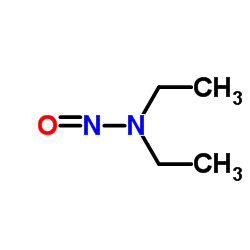| Structure | Name/CAS No. | Articles |
|---|---|---|
 |
N-Nitrosodimethylamine
CAS:62-75-9 |
|
 |
N-Nitrosodiethylamine
CAS:55-18-5 |
|
 |
NPYR
CAS:930-55-2 |